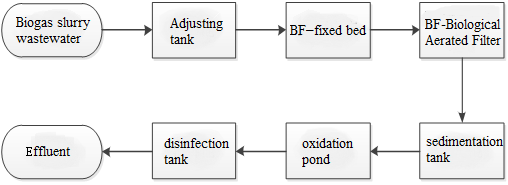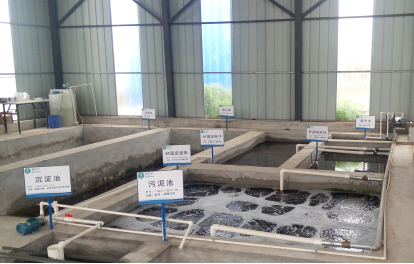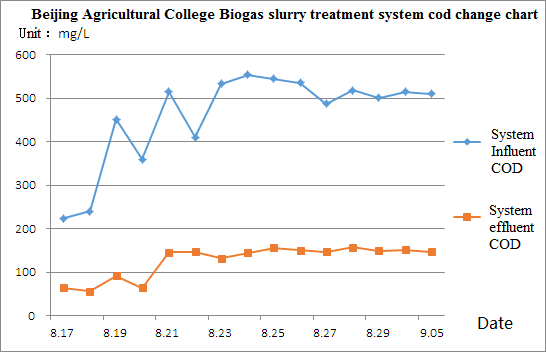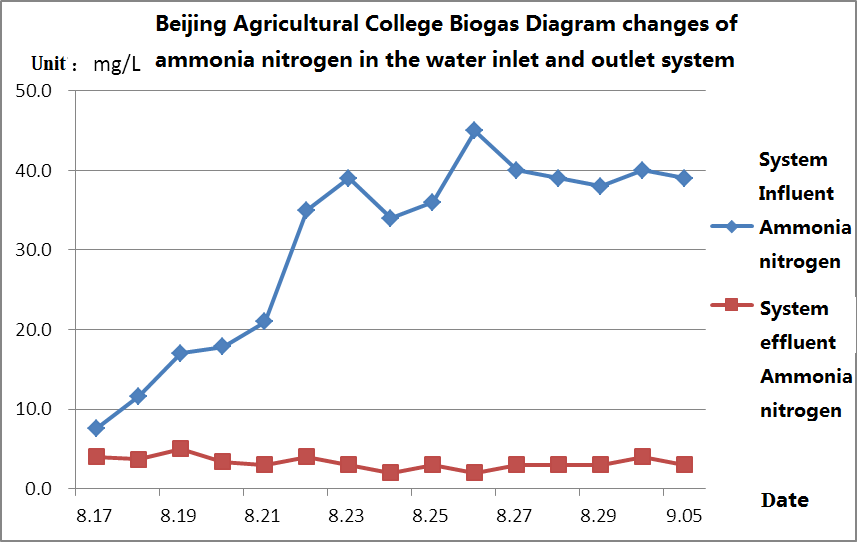Treatment project of cattle dung biogas slurry sewage with Beijing University Of Agriculture
Bright spot:
① High construction efficiency;
② Bio-Form Microbial agent has an obvious advantage, it only takes one week from the start of bacteria adding to stable effluent.
Beijing University of Agriculture, founded in 1956, is the first batch of national reform pilot universities that educates and cultivates outstanding agricultural and forestry talents. It was approved by the State Council as Beijing University of Agriculture in 1978. The wastewater of the northeern cattle farm mainly includes cow dung and cowshed washing water. It belongs to high concentration organic wastewater, and has the problem of high concentration of suspended matter and ammonia nitrogen. This kind of untreated wastewater will change physical, chemical and biological community composition of water body and deteriorate the water quality after entering the natural water. And it also contains a large number of pathogenic microbes, which is harm to the health of humans and animals
Beijing University of Agriculture, Bio-Form made a comprehensive treatment of the wastewater of northern cattle farm. At that time, the daily output of biogas slurry wastewater was 0.5m3/d. In order to achieve long-term benefits, the newly constructed wastewater treatment station could run 24 hours a day, with a handling capacity of 21L/h. The process flow is as follows:

The flow chart of biogas slurry treatment of Beijing University of Agriculture

The exterior view of biogas slurry treatment room of Beijing University of Agriculture

The interior overall view of biogas slurry treatment room of Beijing University of Agriculture
The system began water penetration on August 15. Bio-Form® decontamination, Bio-Form® splitting, Bio-Form® hydrolysis acidifying bacteria, AD agent,MAS agent, PR dephosphorizing bacteria, Bio-Form® nitrifying bacteria and other bacteria agents were added for debugging. At the initial stage of bacteria adding, microorganisms were acclimated through controlling the water concentration of the system, so that it could adjust to the environment of wastewater treatment system quickly. According to the following two line charts, it can be seen that the system has entered a stable period on August 21 with a stable effluent concentration of COD and ammonia nitrogen below 150mg/L and 5mg/L respectively, meeting the management needs of customers.

Diagram changes of COD in the water inlet and outlet system

Diagram changes of ammonia nitrogen in the water inlet and outlet system
In this project, Bio-Form instructed and assisted the infrastructure renovation and civil engineering of the wastewater processing station of Beijing University of Agriculture. The process design, equipment purchase, construction and installation of processing station was finished in 9 days, and the goal of effluent was finished in within 7 days. Beijing University of Agriculture has a high recognition of Bio-Form on its technology, services, and products. 9



